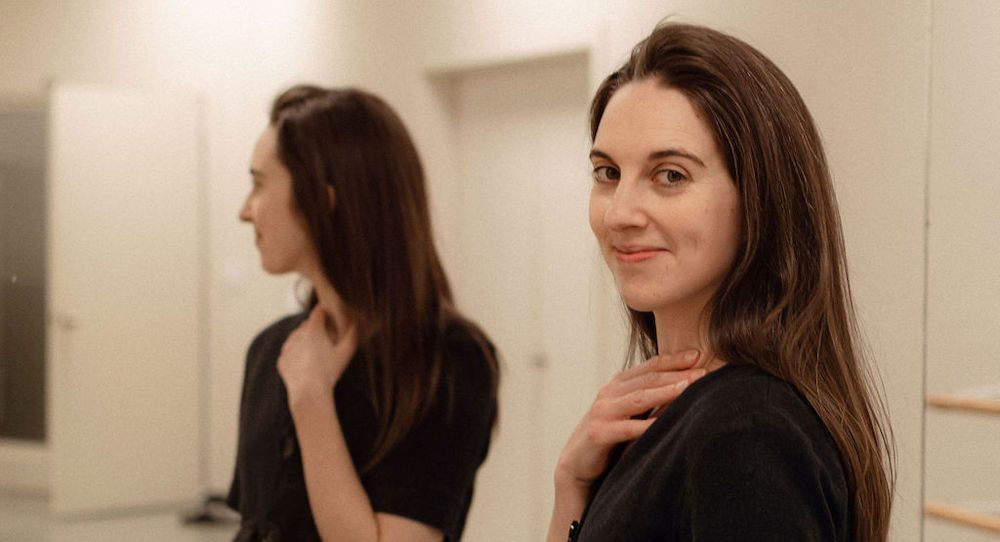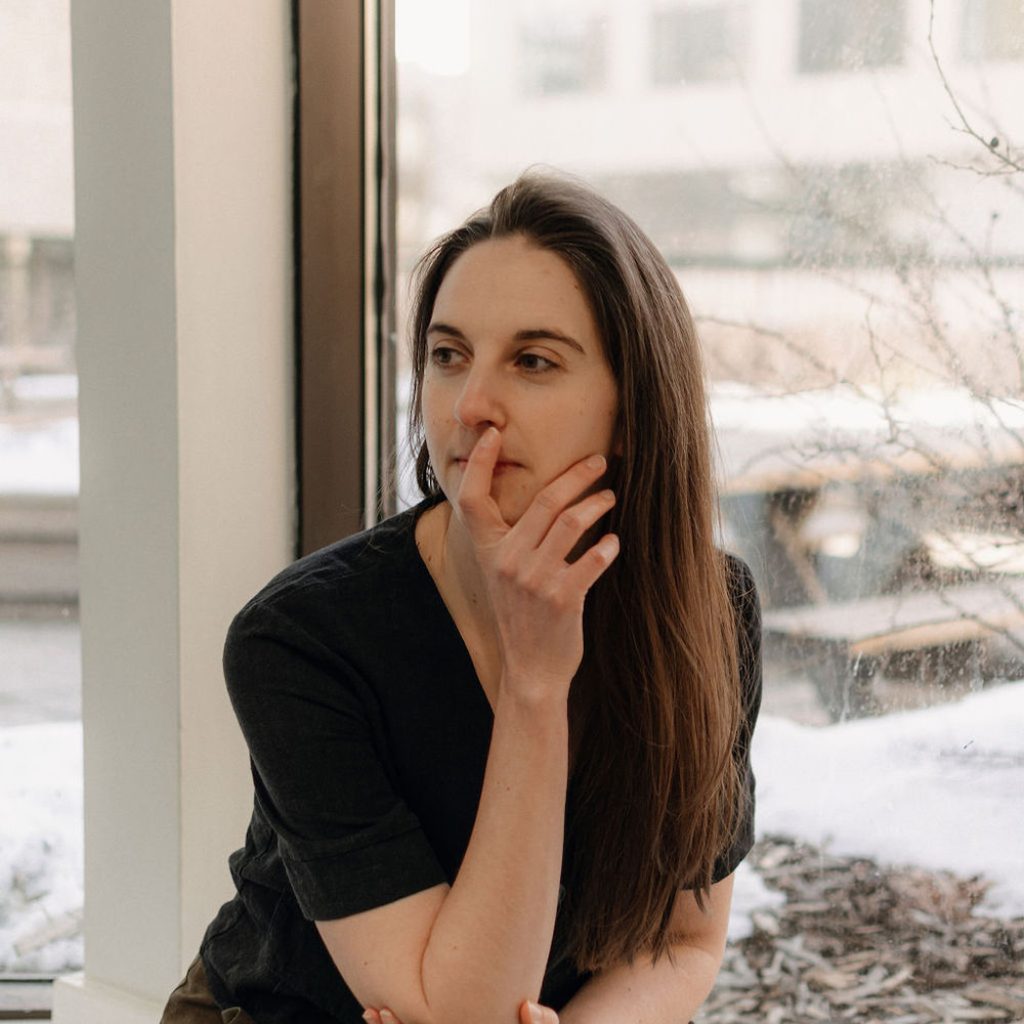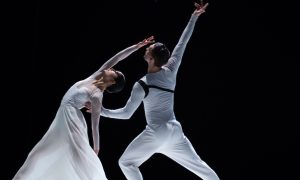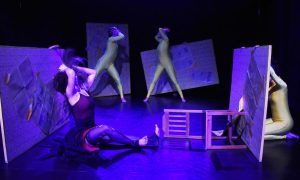As summer winds down, dance teachers may be starting to think about their lesson plans and how they can grow in their craft this coming year.
Helen Cox is a dance educator, choreographer and mentor who teaches at Alberta Ballet School in Calgary, Canada. Cox seems like the type of teacher who is always striving to grow in her craft. She received her M.A. in Dance from London Contemporary Dance School in 2014, and immediately burst into the teaching scene, alongside her freelance performing. She has experience working with young dancers through to vocational students and professional dancers. Her classes focus on contemporary technique, choreography and improvisation. She was the founder and director of Children’s Contemporary Dance between 2014 and 2019.
In 2023, Cox began her training through Rambert Grades, an organization that offers syllabi and online examinations in contemporary dance. Rambert Grades strives to create an inclusive and accessible framework for teachers, who can infuse the technical exercises with creative elements to celebrate the individual student.
Here, Dance Informa speaks with Cox about her experience with her Rambert Grades training and her personal approach to teaching.
At what age did you first start dancing, and what got you into it?
“I started lessons at five years old and for family reasons had to stop training through most of my young childhood. I picked it up again when I was 12 and did every class I could for a few years, eventually being accepted into Alberta Ballet School’s professional division.
I had an older cousin that I looked up to, and I distinctly remember seeing her in pointe shoes one day. It was in that moment that I had a strong sense of knowing what I wanted to do with my life.”
When did you start your Rambert Grades training, and what has been your biggest takeaway from the program?
“I started my Rambert Grades training focusing on grades 1-6 last year and have recently completed grades 7 and 8. The training has given me a huge boost of confidence in what I can offer in my contemporary classes. The syllabus provides a broad range of skills, and I now constantly have the feeling of a full ‘toolbox’ to draw from at any given moment.
The syllabus is divided into three sections: performance, technique and creative. The technique has up to 13 exercises per grade, the creative provides a range of stimuli which guides teachers into score-making, and the performance section allows you to choose a choreographer to focus on, with the option to ‘bolt on’ more choreographers’ work in the future. I chose to learn Hofesh Shechter, and loved learning the work. It feels so good in the body, it is grounded, very physical and demands everything of you. I just set the grade 8 solo on a group of classically trained students at Alberta Ballet School, and it was a remarkably rewarding process for all of us to see each of them dive into the physicality in their own way. It is a totally different way of moving from ballet and increases their versatility as dancers.”
What do you think you can offer as a dance educator? And what are some of your teaching goals when working with students?
“I want to create the space for my students to come into their full color. My mission across all classes, ages and context is to encourage individuality, agency and self-expression. I work to create a space where my students feel confident to be themselves and to feel a sense of joy in their dancing. This doesn’t mean we don’t get into the nitty gritty of technique – that is absolutely present, too – but it’s about achieving a rapport with the students to know that we are in this work together. In fact, one of the reasons I was drawn toward Rambert Grades syllabus, which is central to my teaching practice now, is that it aligns very much with this ethos. The syllabus has been created to foster self-expression, unleash their creative force and take personal responsibility.”
Your career includes teaching all ages – from children to professionals. What is your absolute favorite age to teach, and why?
“I don’t have a favorite age per se, but recently I have been working with vocational dancers between grade 9-12. It’s an exciting age range to work with because each student has an energy of looking toward their futures, many of which are hoping for a career in dance. On that same note, the future can be daunting and can create a massive amount of pressure. Perhaps I feel I can connect with this age range well because I remember that time vividly in my life. It’s an exciting but also vulnerable place to be when dance has become your identity, but self-doubt can be a daily battle. And these are formative times in a student’s training. If we as teachers can encourage our students to be brave, find their individuality and push themselves forward, that can mean the world.”
If you weren’t a dance educator or involved in the dance industry, what do you think you would be doing as a career?
“I had a huge moment of doubt when I was about 19. I remember starting to lose the will to get up early and get to ballet class in the morning, and at that point, I did two things: I enrolled in an evening graphic design course and applied to audition for pre-professional training in contemporary dance. I absolutely loved the graphic design course. There was something similar to what I was doing in the studio; the clarity of shapes on the page felt the same as carving out movements in the studio. I also had a successful audition at School of Toronto Dance Theatre (now called Dance Arts Institute) in Toronto. I chose to take the path of dance, but I think there is a universe somewhere where I am a graphic designer.”
What advice do you have to offer dancers who are trying to become great dance teachers?
“In my experience, the skillset of a dancer is not the same skillset of a teacher. My advice would be to learn as much as you can about pedagogy in dance, take courses and workshops, ask to observe classes, and watch rehearsals of the people you look up to. Once that knowledge is ingrained, the most important thing is your presence with your students. Quiet your mind and, as a mentor always said to me, ‘Teach what you see.’”
You can learn more about Helen Cox at www.helencoxdance.com. To learn more about Rambert Grades, visit www.rambertgrades.com.
By Laura Di Orio of Dance Informa.
















